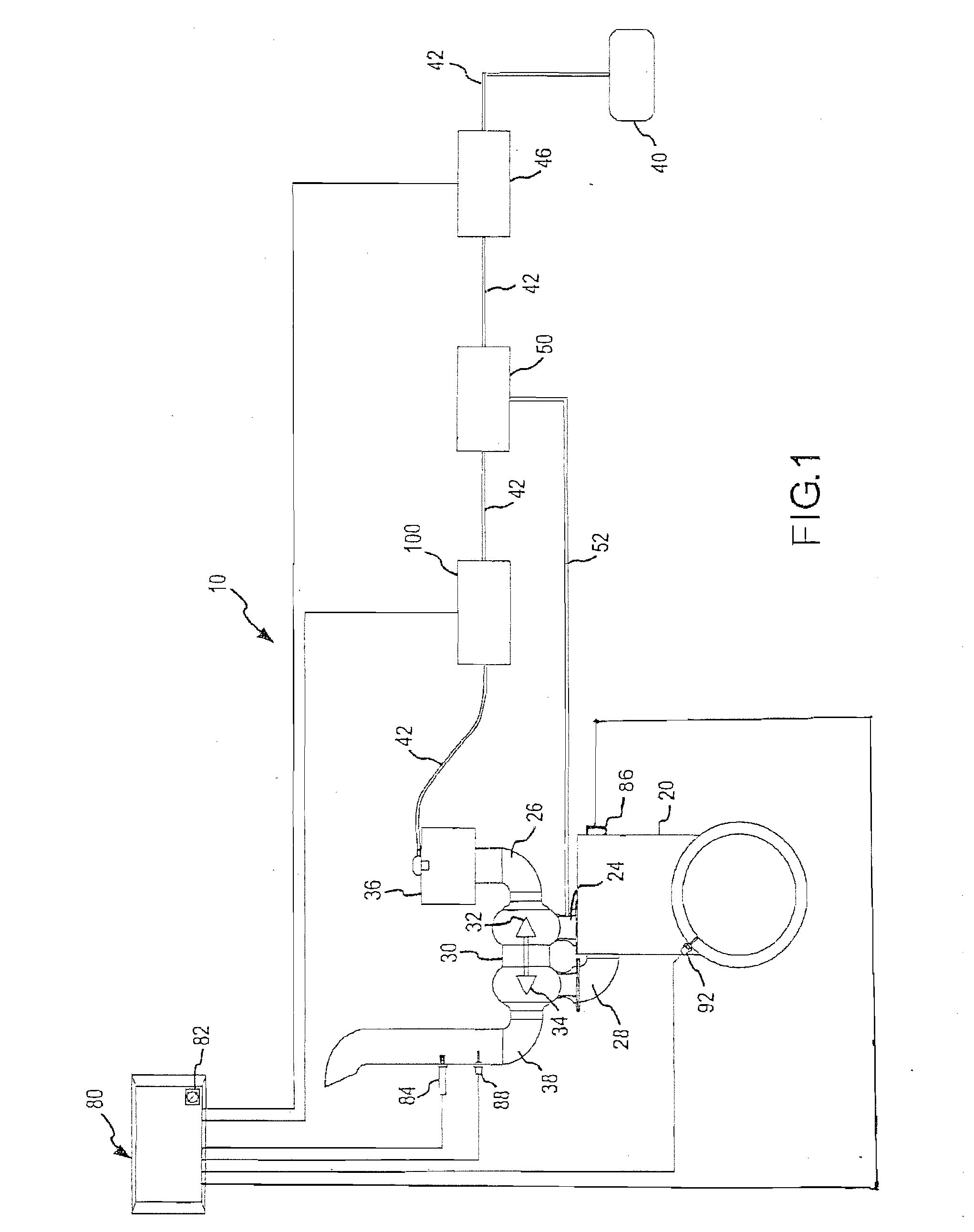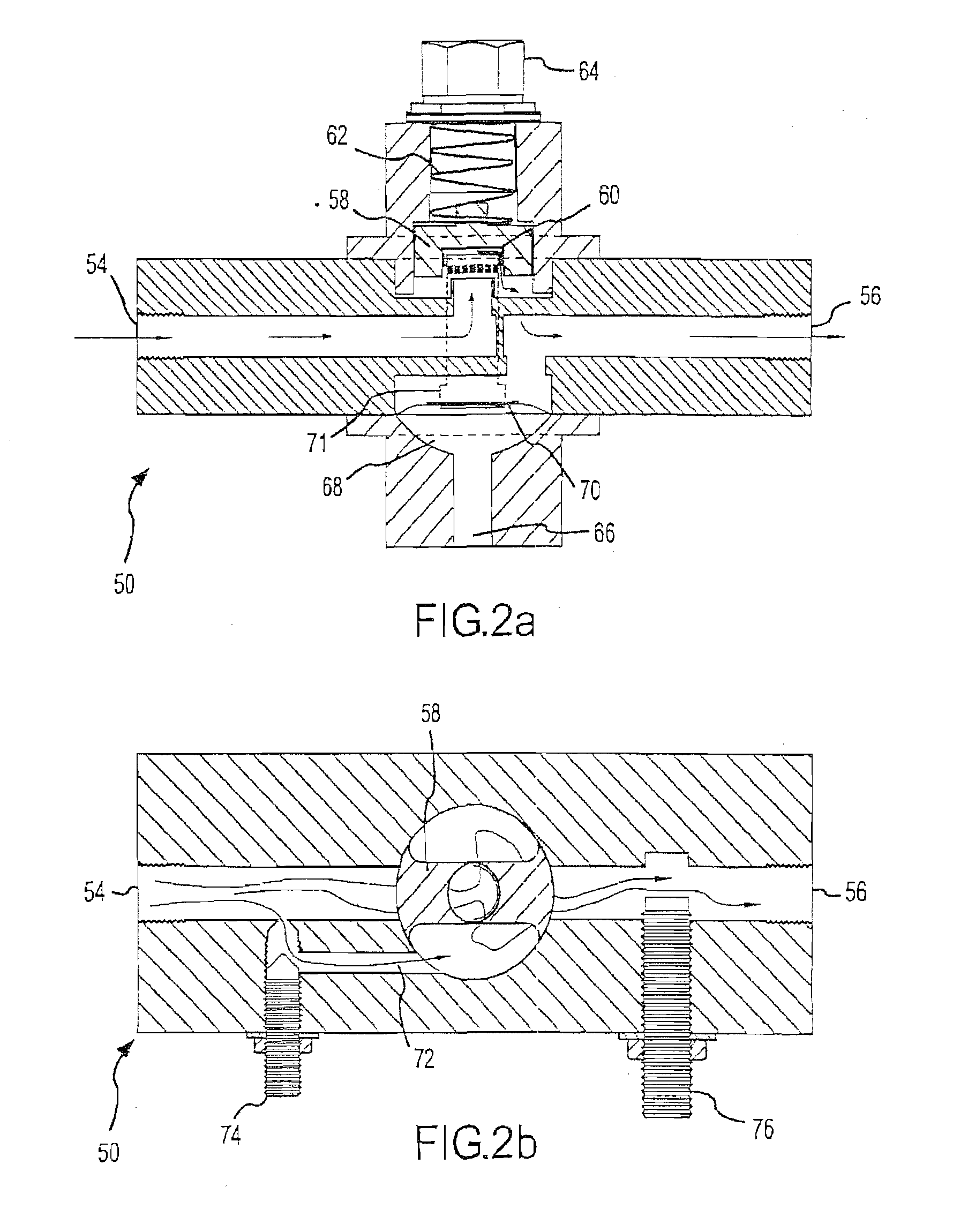Process for use with dual-fuel systems
a dual-fuel and process technology, applied in the field of dual-fuel engine systems, can solve the problems of low engine load, low engine efficiency, and inability to achieve the thermal energy (i.e., btus) required to maintain a desired power, and achieve the effects of reducing the utilization of diesel fuel, reducing the emissions of diesel engines, and minimizing the use of diesel fuel
- Summary
- Abstract
- Description
- Claims
- Application Information
AI Technical Summary
Benefits of technology
Problems solved by technology
Method used
Image
Examples
first embodiment
[0048] The present invention will now be discussed in relation to the accompanying drawings, which at least partially assist in illustrating its various pertinent features. FIG. 1 shows a schematic view of a dual-fuel fumigation system 10 interconnected to a turbocharged diesel engine 20. The fumigation system 10 is applicable to a variety of diesel engine applications and may be utilized in any of a variety of environments where diesel engines are utilized. For example, the fumigation system 10 may be utilized with stationary power generation systems as well as on-road and off-road diesel powered vehicles. That is, the system may be utilized with diesel engines designed to operate at a set load level as well as with diesel engines having varying load requirements due to, for example, idling needs, acceleration needs, cruising needs, etc. Furthermore, it will be noted that the fumigation system 10 is discussed in relation to its applicability to turbocharged diesel engines, however,...
second embodiment
[0072]FIG. 5 shows another embodiment of the gaseous-fuel fumigation system 10. As shown, the second embodiment does not utilize the lock-off valve 46 or the boost-pressure valve 50. Rather, the system of FIG. 5 relies upon a single ECU controlled valve 200 to regulate the flow between the gas supply 40 and the air intake 36. Of note, in FIG. 5 the gas supply 40 is received from a gas well 44. In this regard, it will be appreciated the in the production of natural and methane gas, diesel engines are commonly utilized for pumping and compressing gas from wells into pipelines. In this regard, these diesel engines have a ready supply of natural gas that may be utilized with the above-noted systems. However, it will be appreciated that gas received from the well 44 may require dehydration and / or compression prior to use with the diesel engine 20. It will be further appreciated that the system of FIG. 5 may be utilized with other gas sources.
[0073] The dual-fuel fumigation system 10, as ...
PUM
 Login to View More
Login to View More Abstract
Description
Claims
Application Information
 Login to View More
Login to View More - R&D
- Intellectual Property
- Life Sciences
- Materials
- Tech Scout
- Unparalleled Data Quality
- Higher Quality Content
- 60% Fewer Hallucinations
Browse by: Latest US Patents, China's latest patents, Technical Efficacy Thesaurus, Application Domain, Technology Topic, Popular Technical Reports.
© 2025 PatSnap. All rights reserved.Legal|Privacy policy|Modern Slavery Act Transparency Statement|Sitemap|About US| Contact US: help@patsnap.com



